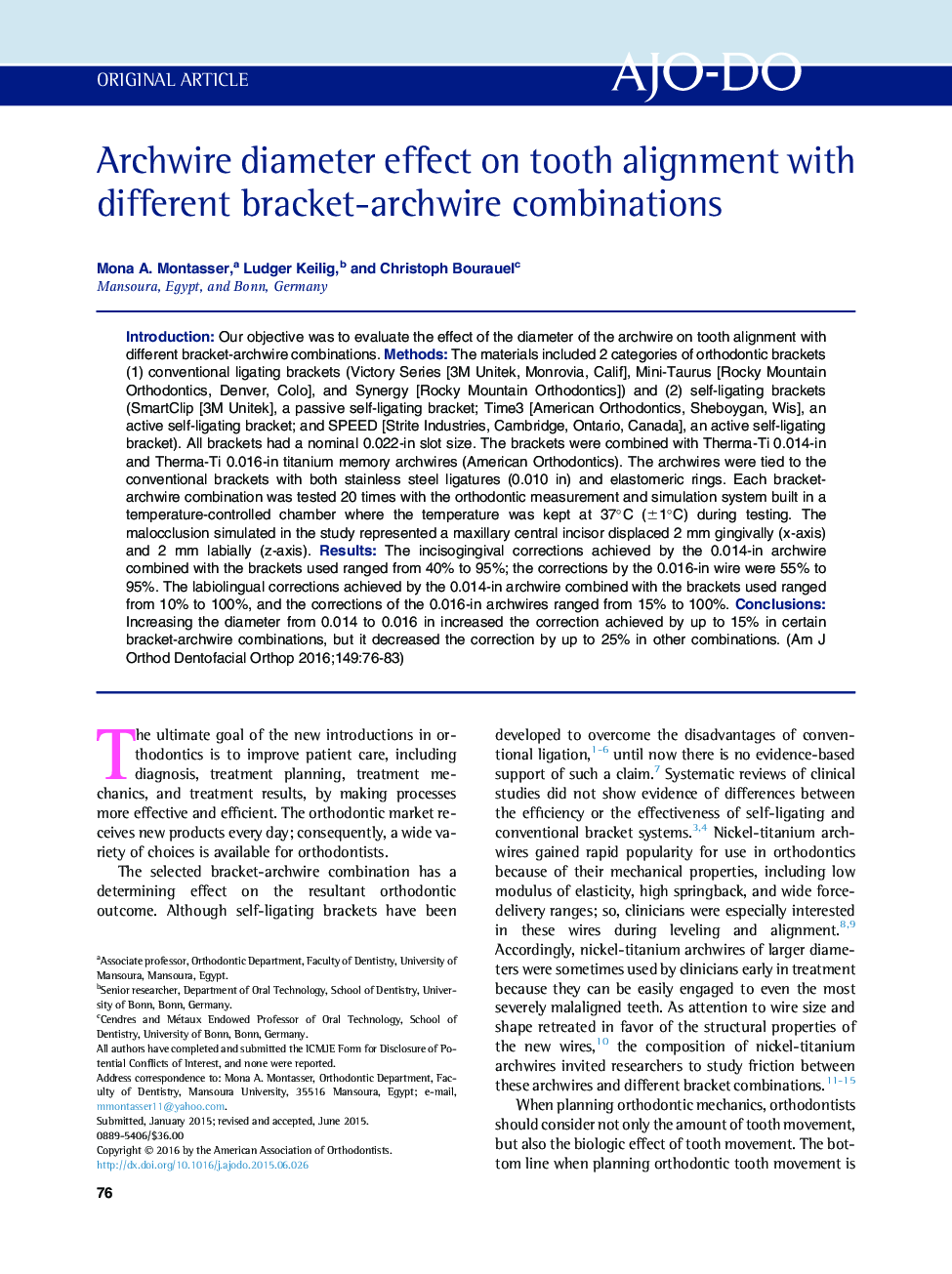| Article ID | Journal | Published Year | Pages | File Type |
|---|---|---|---|---|
| 3115761 | American Journal of Orthodontics and Dentofacial Orthopedics | 2016 | 8 Pages |
•We studied the effects of changes in archwire diameter on tooth alignment.•Displacements of a maxillary central incisor 2 mm gingivally and labially were simulated.•We combined 0.014- and 0.016-in titanium memory wires with 6 types of brackets.•Changing from 0.014 to 0.016 in increased the correction at best by 15%.•Smaller archwires are recommended in leveling and alignment to avoid high forces.
IntroductionOur objective was to evaluate the effect of the diameter of the archwire on tooth alignment with different bracket-archwire combinations.MethodsThe materials included 2 categories of orthodontic brackets (1) conventional ligating brackets (Victory Series [3M Unitek, Monrovia, Calif], Mini-Taurus [Rocky Mountain Orthodontics, Denver, Colo], and Synergy [Rocky Mountain Orthodontics]) and (2) self-ligating brackets (SmartClip [3M Unitek], a passive self-ligating bracket; Time3 [American Orthodontics, Sheboygan, Wis], an active self-ligating bracket; and SPEED [Strite Industries, Cambridge, Ontario, Canada], an active self-ligating bracket). All brackets had a nominal 0.022-in slot size. The brackets were combined with Therma-Ti 0.014-in and Therma-Ti 0.016-in titanium memory archwires (American Orthodontics). The archwires were tied to the conventional brackets with both stainless steel ligatures (0.010 in) and elastomeric rings. Each bracket-archwire combination was tested 20 times with the orthodontic measurement and simulation system built in a temperature-controlled chamber where the temperature was kept at 37°C (±1°C) during testing. The malocclusion simulated in the study represented a maxillary central incisor displaced 2 mm gingivally (x-axis) and 2 mm labially (z-axis).ResultsThe incisogingival corrections achieved by the 0.014-in archwire combined with the brackets used ranged from 40% to 95%; the corrections by the 0.016-in wire were 55% to 95%. The labiolingual corrections achieved by the 0.014-in archwire combined with the brackets used ranged from 10% to 100%, and the corrections of the 0.016-in archwires ranged from 15% to 100%.ConclusionsIncreasing the diameter from 0.014 to 0.016 in increased the correction achieved by up to 15% in certain bracket-archwire combinations, but it decreased the correction by up to 25% in other combinations.
